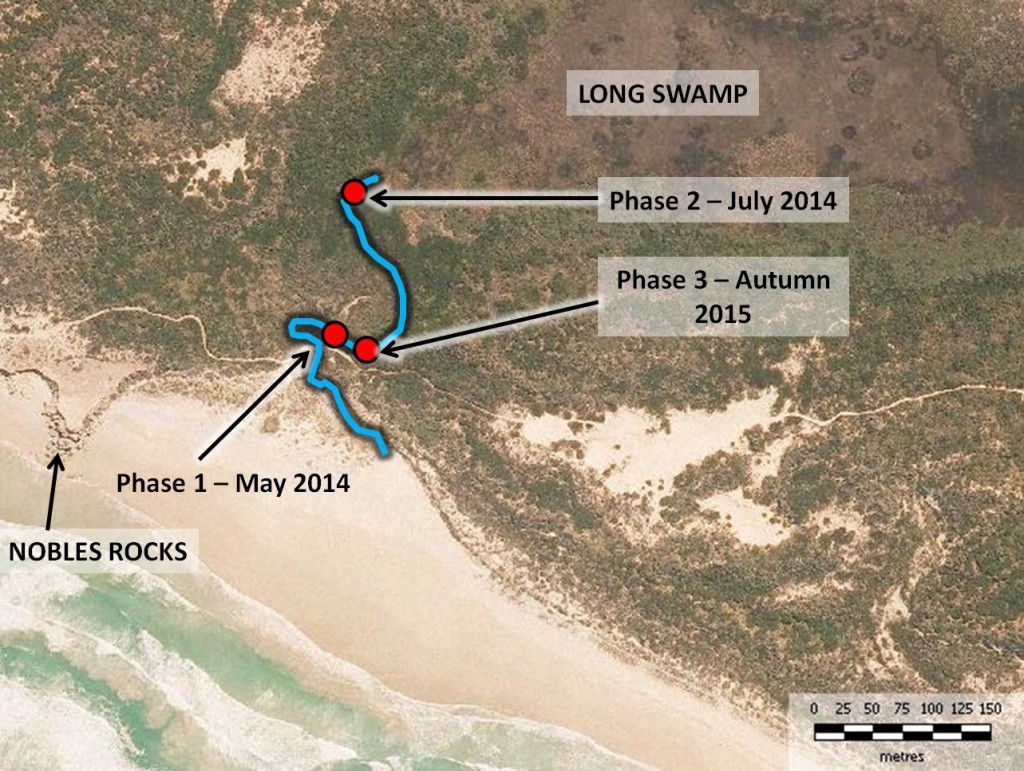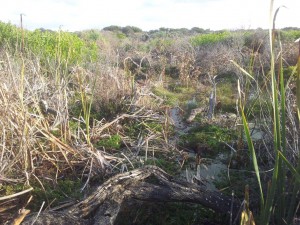Long Swamp restoration trial – fast approaching the ‘tipping point’ set by the Phase 2 structure
On Monday, in the first of two days we’re putting in this week to get the Phase 3 restoration trial closer to completion, we have almost reached what I think of as a significant ‘tipping point’. I realise this may not make a lot of sense, so let me explain what I mean…
The Phase 1 structure (sited in the most practical location due to the flowing conditions last year) didn’t end up being high enough to directly influence levels in the main part of this corner of Long Swamp, due to the amount of fall in the channel, so we built a smaller (Phase 2) structure about 150 metres upstream. The phase 2 structure is around 40-50 cm higher than the Phase 1 structure and at this height has begun (but due to the limited height of the low bank at that location, only in a minor way) the process of restoring wetland habitat in Long Swamp itself.
The operation of these two structures, and the two separate weir pools they created, enabled us to plan the implementation of the 3rd (and, if successful final) phase of the trial this year. As you’d be aware from previous blogs, the job this year is bigger because in order to tie into a higher point in the dunes, we have also had to work at a much wider location in the channel.
After 7 days of hard yakka over the past few weeks and about 5000 bags later, we are now beyond the height achieved with the 1st Phase structure and we are fast approaching an elevation that will make the Phase 2 structure redundant. The following images illustrate how we are fast approaching this significant ‘tipping point’.
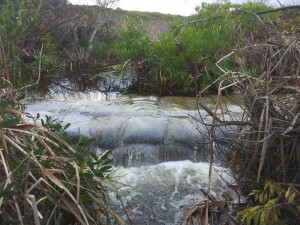
The Phase 2 structure, with the Phase 1 structure operational downstream last year.
This is how up and downstream levels either side of the Phase 2 structure appeared about a week ago, when the Phase 3 structure reached the Phase 1 structure height – (Phase 3 gauge board reading approx. 105 cm).
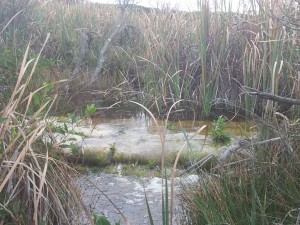
This is how the same location looked at the start of Monday’s sandbagging – (Phase 3 gauge board reading 122 cm).
Notice how the downstream pool is closer in elevation to the upstream level, achieved after the 3rd community sandbagging day last Thursday – which lifted the height of the Phase 3 structure beyond the maximum height of the Phase 1 structure.
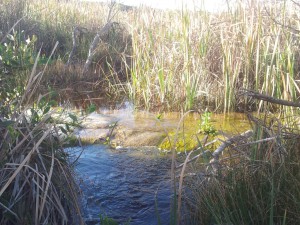
…and by the end of Monday 20th April, the Phase 2 structure is almost, but not quite, redundant – (Phase 3 gauge board reading 133 cm).
When the levels either side of the Phase 2 structure equalise – creating a single weir pool above the Phase 3 structure – we will have reached a significant milestone. Beyond that, we’ll be directly influencing water levels in the deep corner of Long Swamp upstream of the Phase 2 weir, which co-incidentally has been sitting steady at 34 cm deep for the past couple of weeks. So it looks like one more day of sandbagging will get us to that point!
It is also worth mentioning that as we approach this height, we are recreating wetland habitat in the low-lying area between the two structures:
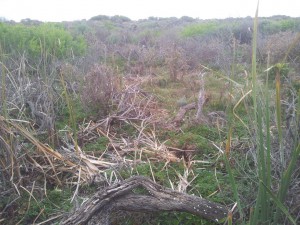
BEFORE: An area of former wetland habitat situated in the area between the Phase 3 and Phase 2 structures, last Thursday.
The area shown in these photos is actually the zone of wetland that featured in a previous blog – where wetland plants have been persisting despite the dry conditions, along side dryland species that had since invaded. If all goes to plan then the dryland species in this image (like Coastal Wattle) will naturally retreat upslope as aquatic plants and critters begin to thrive again.
While reaching the Phase 2 structure height is our next goal, as you have probably gathered from reading this blog it is only really just the beginning of the trial.Beyond that height, we will be looking to set a new level for Phase 3 capable of reinvigorating a broader area of wetland habitat in this portion of Long Swamp than was possible last year. So we have a very interesting week ahead!


